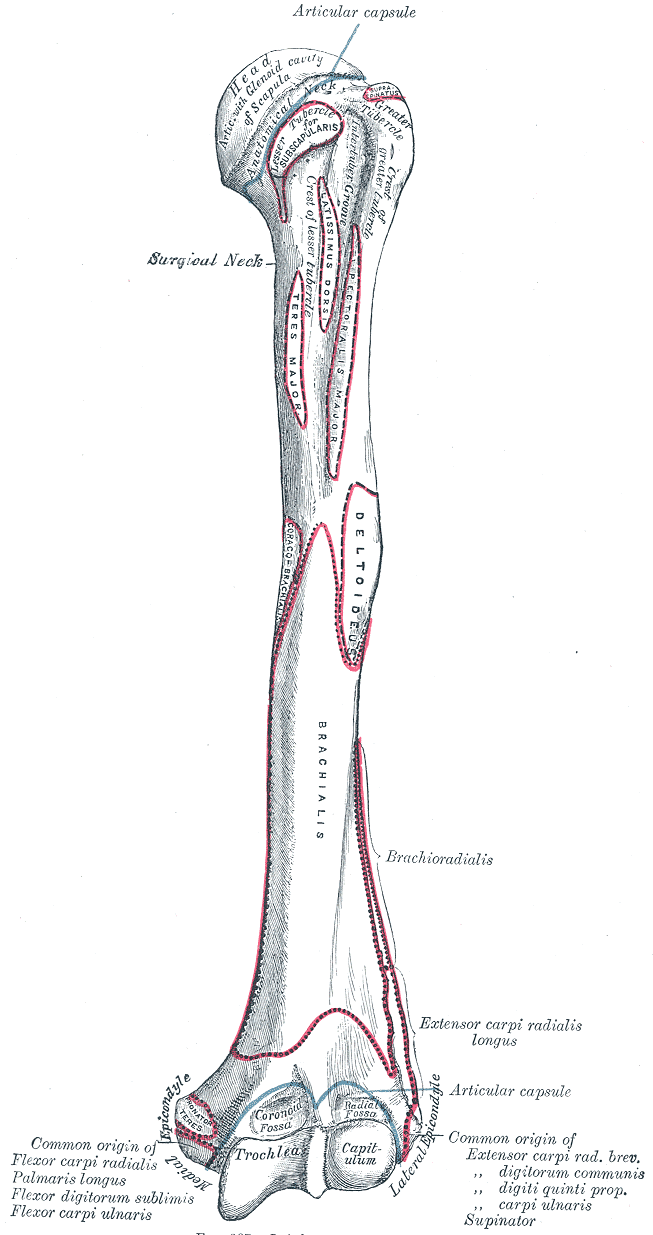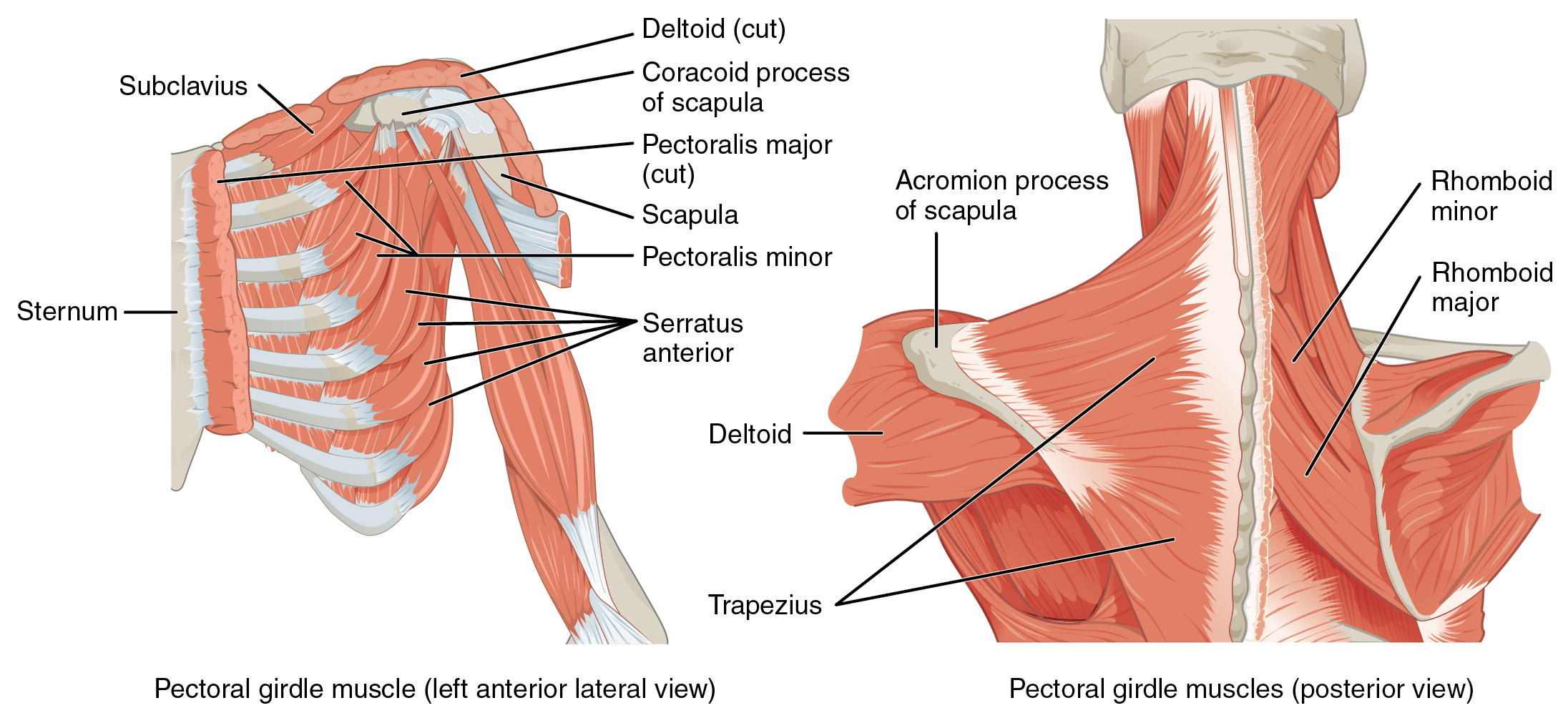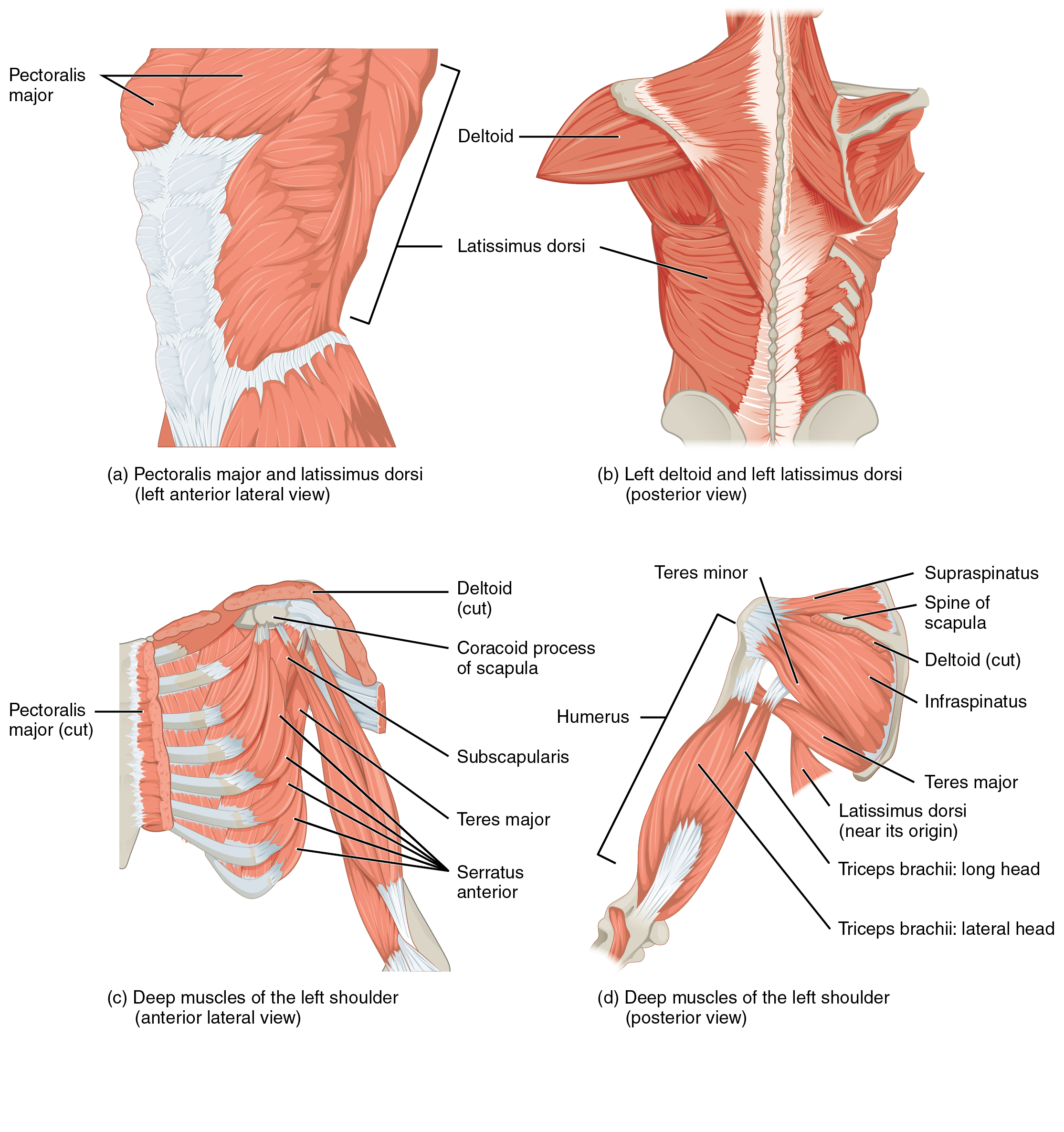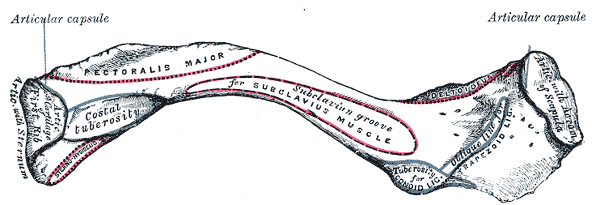Deltoid muscle
| Muscle | Origin | Insertion | Innervation | Action |
|---|---|---|---|---|
| Anterior deltoid | Lateral third of clavicle | Deltoid tuberosity of humerus | Axillary n. C5 - C6 |
GHJ: Flexion, IR, Adduction |
| Lateral deltoid | Acromion | Deltoid tuberosity of humerus | Axillary n. C5 - C6 |
GHJ: Abduction |
| Posterior deltoid | Scapular spine | Deltoid tuberosity of humerus | Axillary n. C5 - C6 |
GHJ: Extension, ER, Abduction |
Overview
The deltoid is divided into 3 parts and 7 functional units.
| Parts | Components |
|---|---|
| Anterior part | I & II |
| Lateral | III |
| Posterior | IV, V, VI, & VII |
II, III, and IV lie lateral to the abduction axis and produce abduction6.
I, V, VI, and VII act as adductors. I and V are conditional and act as adductors when the upper limb hangs down vertically6. VI and VII always act as adductors6.
| Component | a | Action |
|---|---|---|
| I | ||
| II | Lateral to abduction axis | Abduction |
| III | Lateral to abduction axis | Abduction |
| IV | Lateral to abduction axis | Abduction |
| V | ||
| VI | Adduction | |
| VII | Adduction |
Anterior head
Origin
Lateral 1/3 of clavicle7
Insertion
Humerus (deltoid tuberosity)7
Innervation
Action
Flexion, internal rotation, adduction7
Lateral part
Innervation
Action
Abduction7
*Between 60 and 90 degrees of abduction, the clavicular and spinal parts assist the acromial part with abduction7
Posterior part
Origin
Innervation
Action
Extension, external rotation, adduction7
*Between 60 and 90 degrees of abduction, the clavicular and spinal parts assist the acromial part with abduction7
Abduction Activation
The deltoid is active at the start of abduction and achieve full abduction6. The deltoid’s peak efficiency occurs at 90°6. It can generate up to 8.2x the weight of the upper limb6.
Pure abduction
Pure abduction occurs in the frontal plane.
Scapular plane abduction
Scapular plane exists between the sagittal and frontal planes. 30° from the frontal plane6.
External rotation into abduction
- II (anterior deltoid) contracts at the start
IV and V (Posterior deltoid) do not contract at all during this movement6.
IR to abduction
“recruitment order reverses”6.
Clinical Relevance
As the GHJ becomes more unstable, the deltoid muscle takes on more of a stabilizing role8




